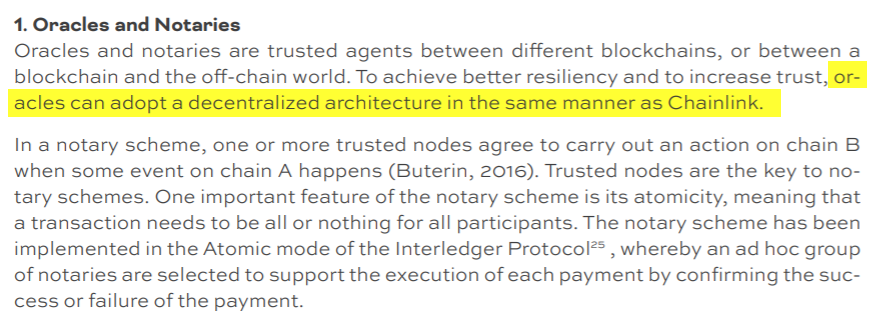
The World Bank recently tested several #blockchain #interoperability methods.
They mention 4 approaches:
1. Oracles and Notaries
2. Sidechains/Relays
3. Time-bound Asset Locking and Release
4. Application Layer Adaptors
They mention 4 approaches:
1. Oracles and Notaries
2. Sidechains/Relays
3. Time-bound Asset Locking and Release
4. Application Layer Adaptors

Mentioned in the approaches:
1. Oracles & Notaries ( $LINK )
2. Sidechains/Relays/Value Transfer ( $DOT and #interledger)
3. Time-bound Asset Locking and Release (HTLC)
4. Application Layer Adaptors/API Approach (DAML smart-contracts & $QNT @Overledger any-to-any blockchain app)

1. Oracles & Notaries ( $LINK )
2. Sidechains/Relays/Value Transfer ( $DOT and #interledger)
3. Time-bound Asset Locking and Release (HTLC)
4. Application Layer Adaptors/API Approach (DAML smart-contracts & $QNT @Overledger any-to-any blockchain app)


The World Bank tested 3 of the 4 approaches:
2⃣- Interledger
3⃣ - HTLC
4⃣ - API approach for a *non-smart contract* Procure-to-Pay resource
It sounds like they used @quant_network @Overledger in test number 4, as a non-smart contract-specific data service was created.
2⃣- Interledger
3⃣ - HTLC
4⃣ - API approach for a *non-smart contract* Procure-to-Pay resource
It sounds like they used @quant_network @Overledger in test number 4, as a non-smart contract-specific data service was created.

"Among various explorations by the World Bank teams, the e-Procurement and disbursement traceability use case exploration is very relevant in the interoperability discussion."
The e-Procurement use case was test #4.
It sounds to me like the World Bank loves @Overledger
$QNT
The e-Procurement use case was test #4.
It sounds to me like the World Bank loves @Overledger
$QNT

• • •
Missing some Tweet in this thread? You can try to
force a refresh





